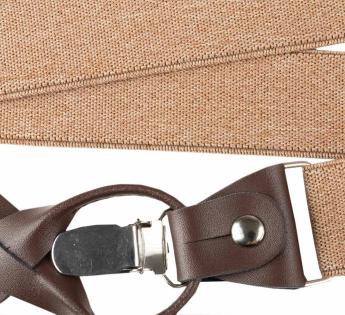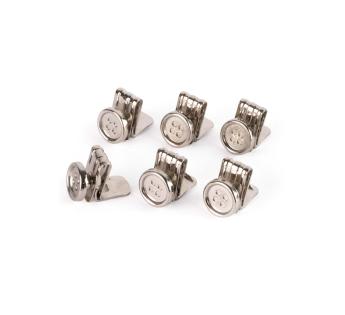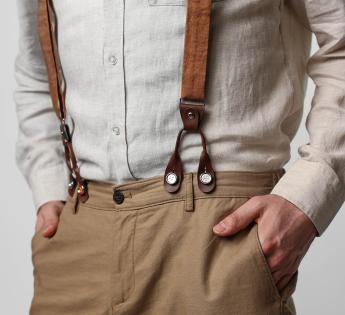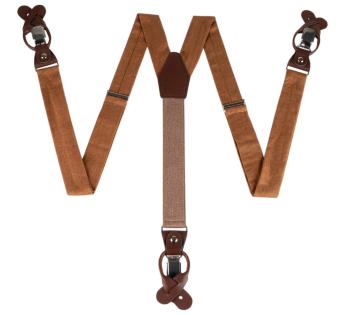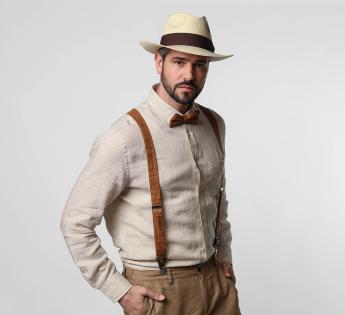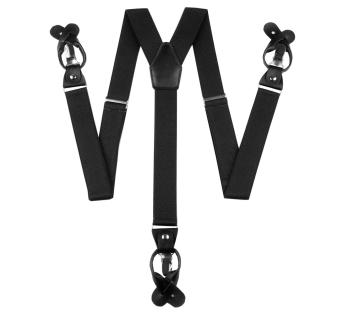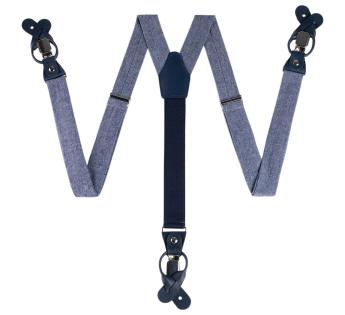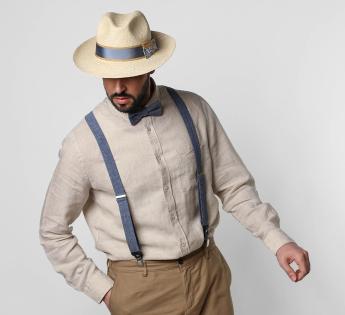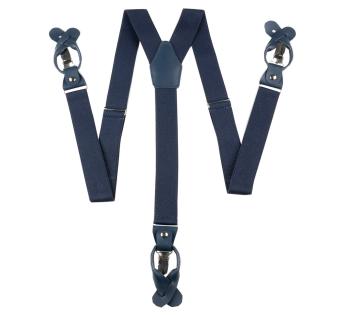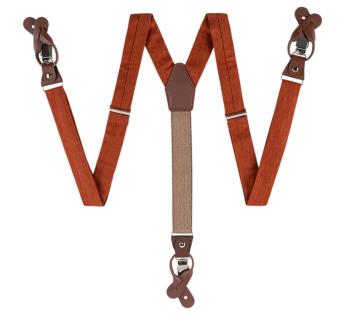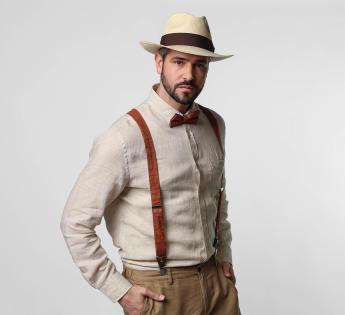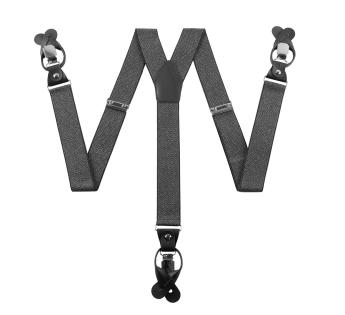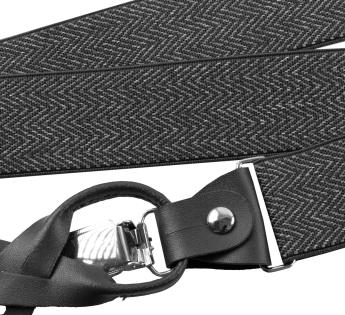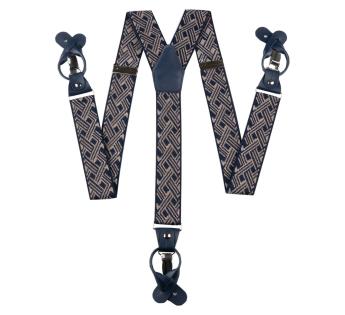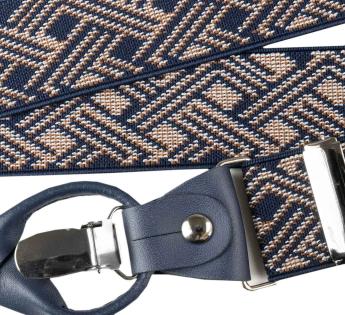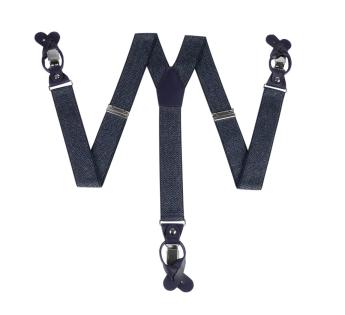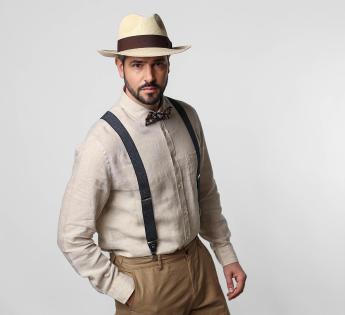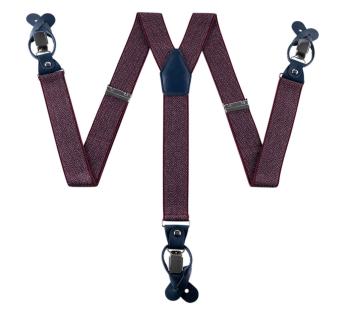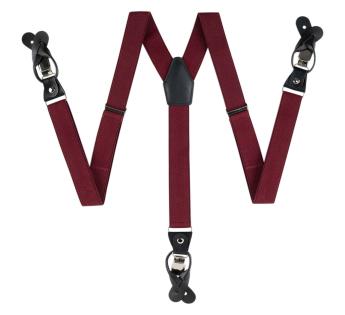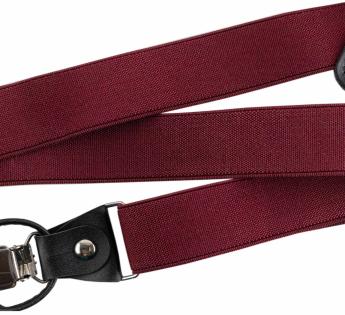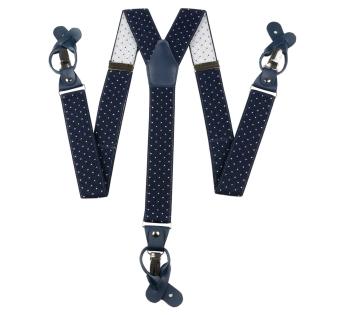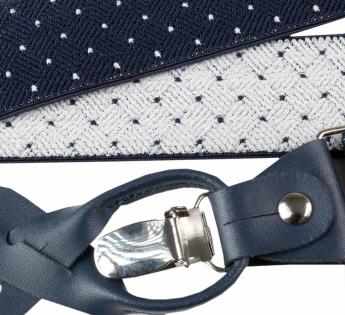Belts
We love all belts, big ones, small ones, brown, black, subtle and bold. If you share our passion, you'll find your happiness in this section.
The Different Styles
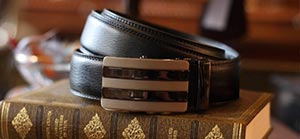
The suit belt should be understated and discreet. Rather slim, it measures between 2.5 and 3.5 cm in width. We recommend matching the color of your belt to that of your shoes for a flawless style. Indeed, echoing the shoe color at the center of the silhouette with the belt will enhance the elegance exuded by the suit you wear.
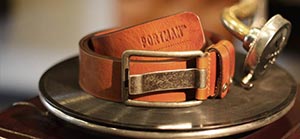
The everyday belt is one that will be easily worn with jeans or chinos. Less understated than the suit belt, it is generally wider and sometimes allows for more vibrant colors. However, it is also advised to match it with your shoes to maintain the outfit's refinement.
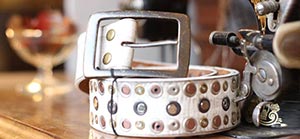
Opting for a more original belt will draw a lot of attention to it. To balance this effect, match the belt with another element of your outfit such as a foulard, a hat, or even a bag. Worn with a classic outfit, this type of model will bring a lot of originality to your look. A simple and elegant way to transform your outfit.
Body Shape
Choosing based on the style of pants you wear is a crucial first step. It is also important to be aware of your body shape to avoid unbalancing your look. Here are some common-sense tips:- You are short: overly wide belts can create a squashing effect. The same goes for a high color contrast, which divides the silhouette. Prefer medium-wide or thin belts, matched to your pants and/or top.
- You have a long torso: to try to elongate your torso, wear high-waisted pants and match the color of your belt to your pants, which will help lengthen the lower part. The belt can be wide or thin, the important thing here is to elongate the legs.
- You have a short torso: do the opposite: wear relatively low-rise pants to increase the length of your torso. A low thickness is recommended.
- You are overweight: is your waistline not your greatest pride? In that case, choose a discreet belt to avoid drawing attention. Prefer it wide, with a simple buckle and classic colors.
Leather Quality
No matter how small the surface, a leather belt deserves to be maintained. Nothing that will take you more than two minutes, rest assured! To care for it, periodically use specialized care products. Clean, grease, then polish to make it shine, and you're done!Split Leather
Resulting from a "splitting" of the animal's leather: the leather is subdivided and less thick than originally. As a result, the rough side of the leather (the grain) disappears, replaced by varnish or other coatings. It is the most common leather whose quality is lower than that of full-grain leather.
Full-Grain Leather
It's the Rolls Royce of leather! Extremely durable, the leather is treated to retain all its thickness. The grain refers to the outer side of the skin. This is what gives the leather its texture and richness.
Suede / Nubuck
Suede leather, commonly called nubuck, is the inner part of the leather that has been sanded. Don't be fooled by its soft nap; it is an extremely robust material!
Sizes
When choosing your belt, are you at a loss because you don't know your size? Don't worry, we provide you with the keys to measure below.Grab a tailor's tape measure and wrap it around your waist: you will get your waist size in cm, generally between 75 and 120 cm. To make it easier, you can pass the tape through the loops of your pants, as if it were a belt.
The second option is to measure one of your belts from the end of the buckle to the middle hole, usually the third of five.
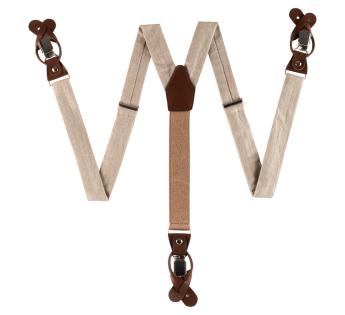
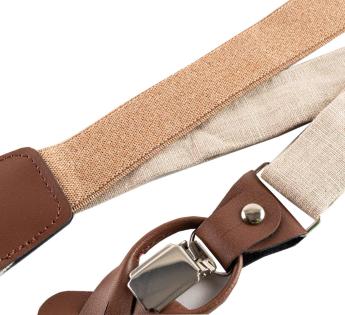
 Collection
Collection
